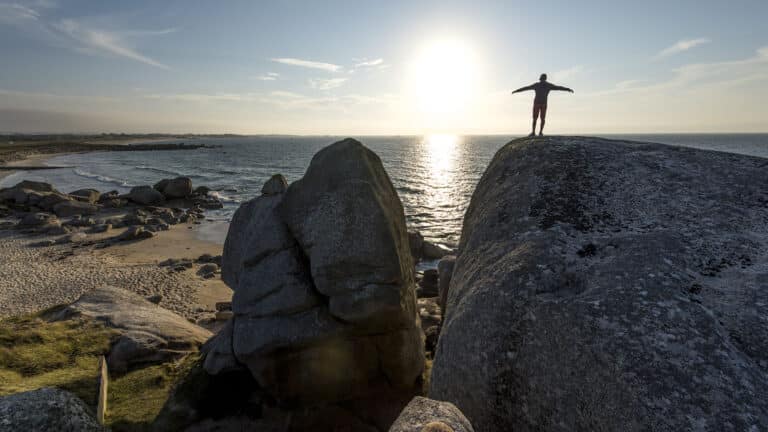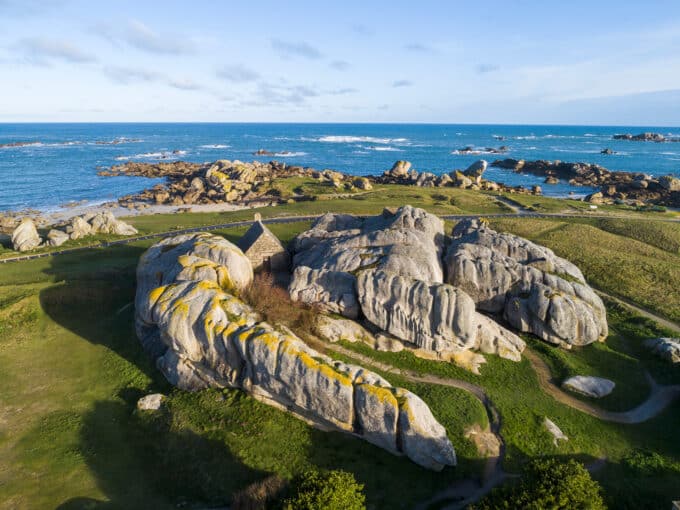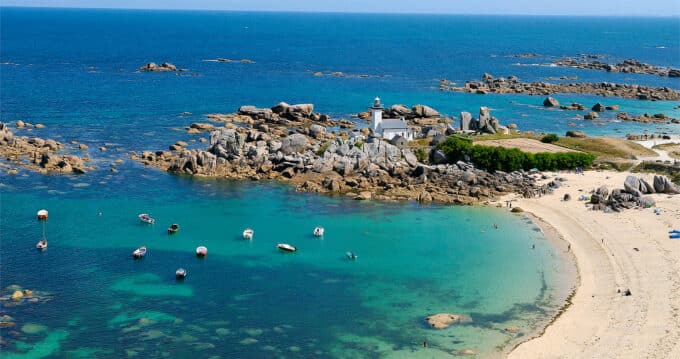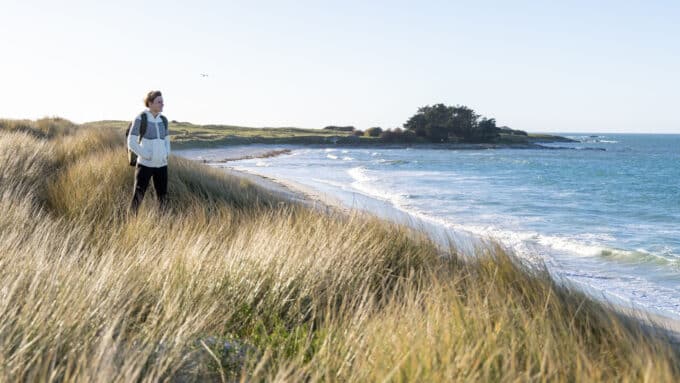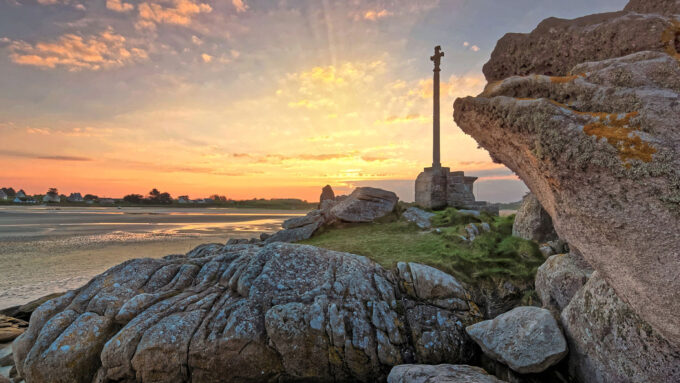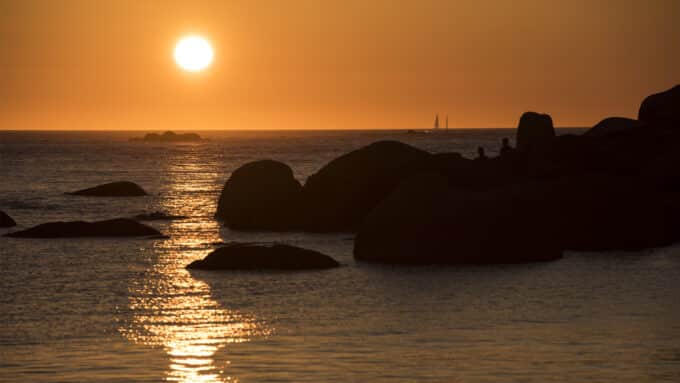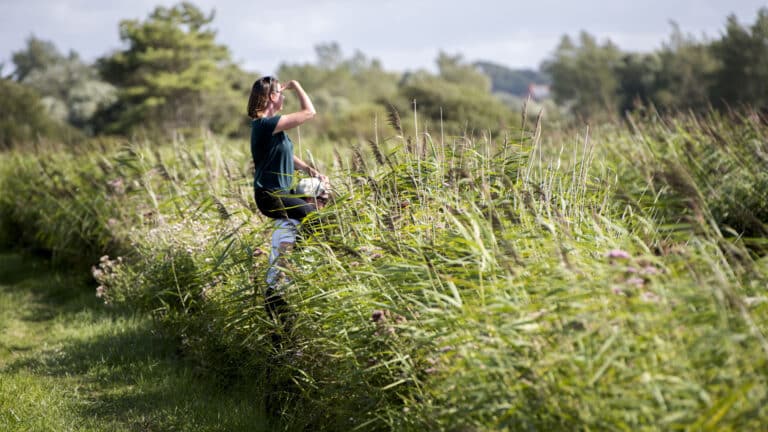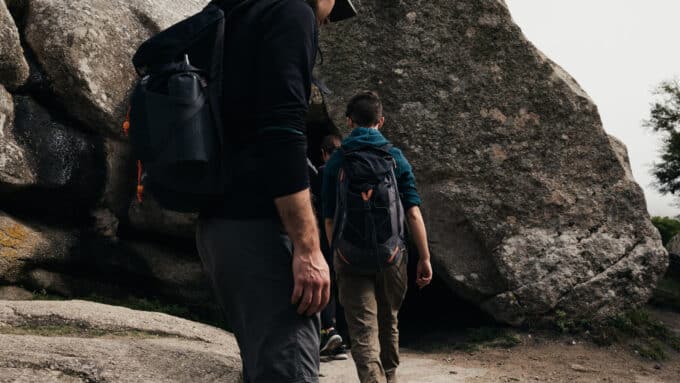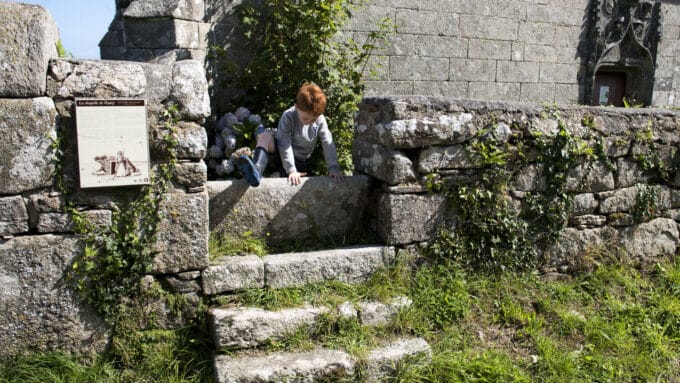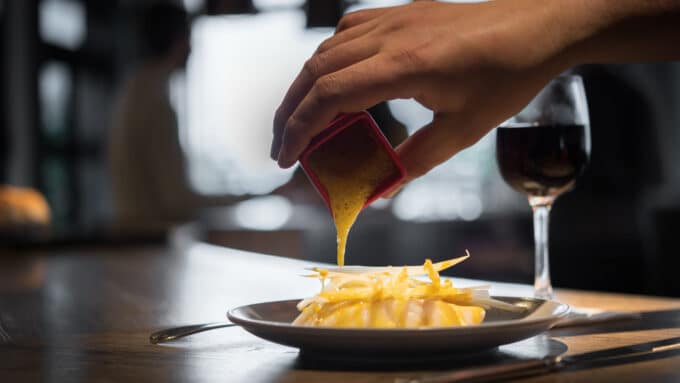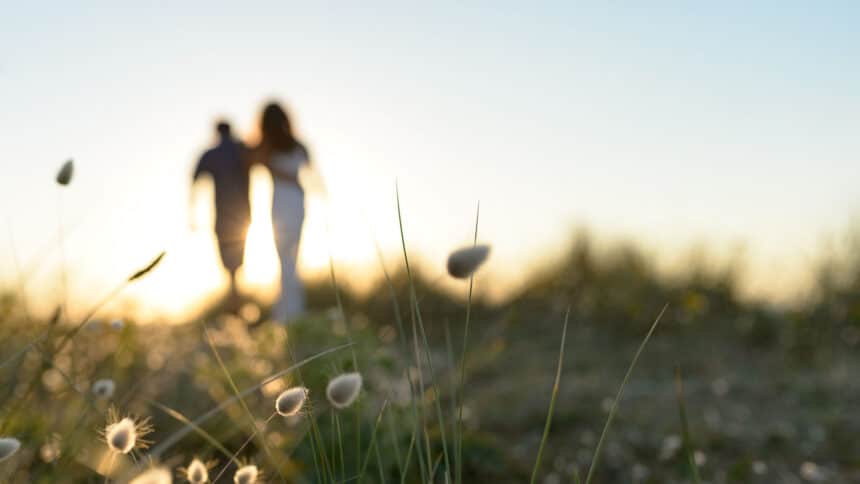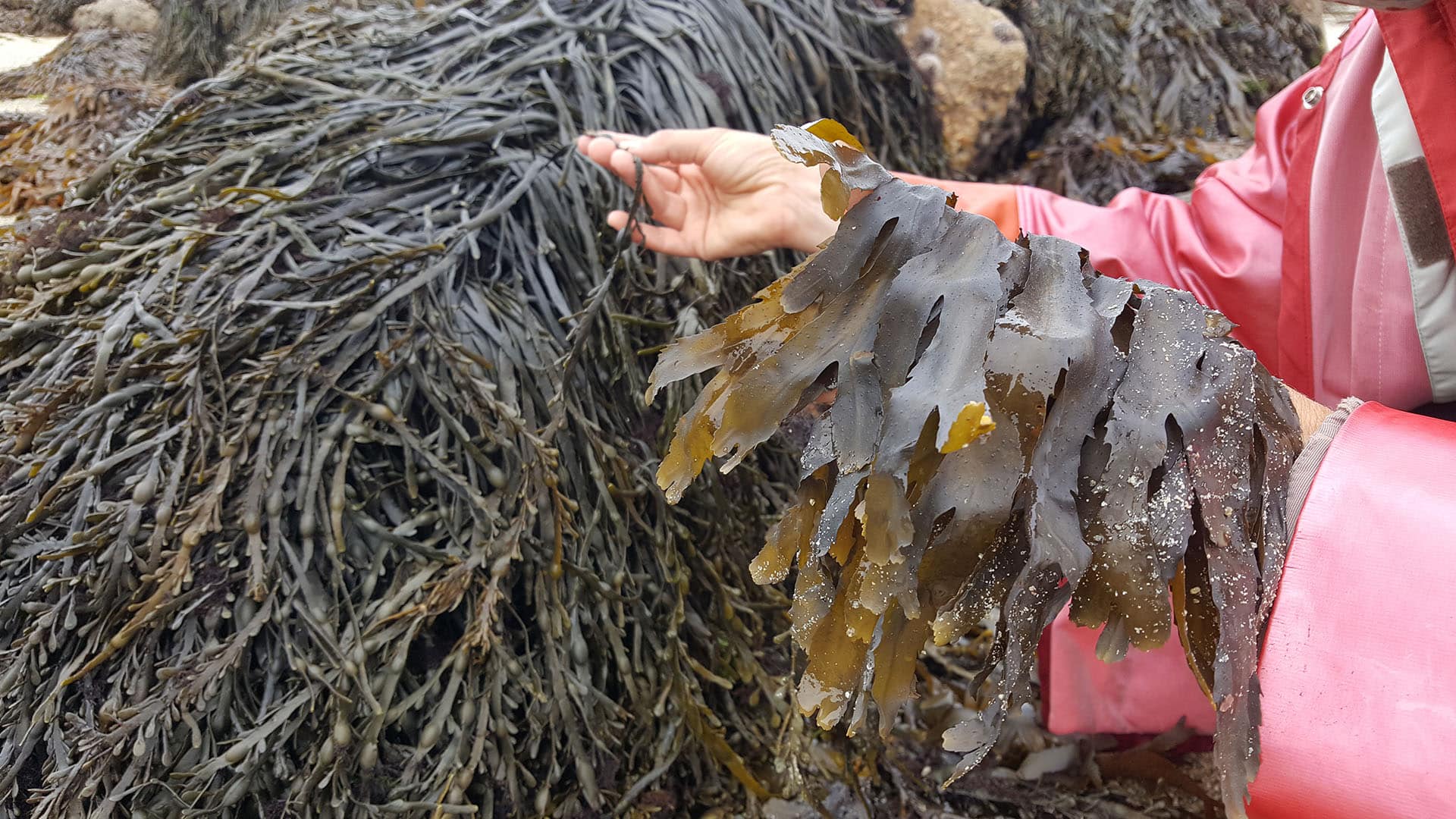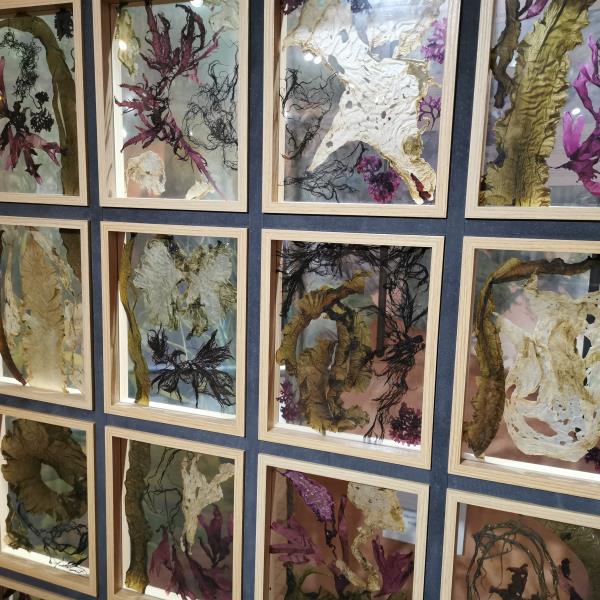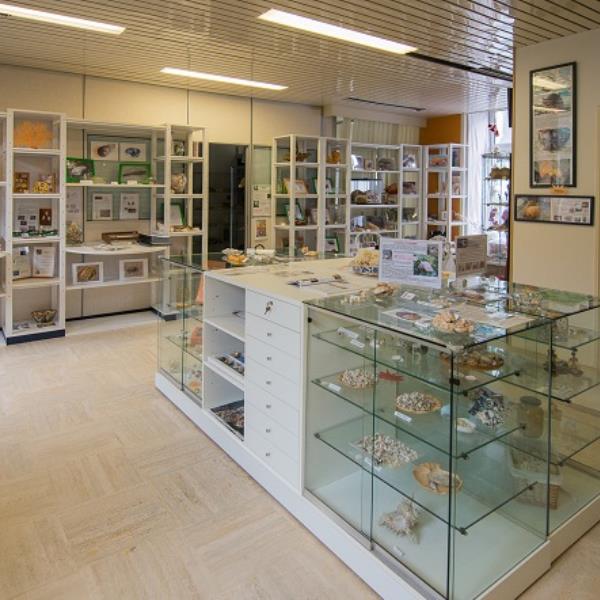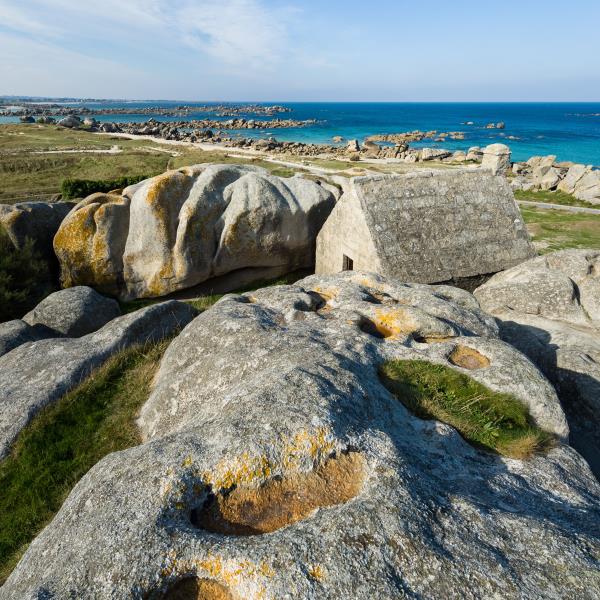Interview with André Berthou
With a lifelong attachment to the sea, André Berthou naturally turned to harvesting shore algae and seaweed farming in 2000. He sees this sector as a future-oriented, innovative profession, and above all as a natural resource to be protected. The Syndicat des Récoltants Professionnels d'Algues de Rive de Bretagne was created in 2008.
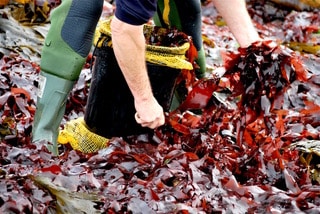
Seaweed harvesting
A sector located in Brittany
There are currently 78 companies harvesting Breton seaweed, 50 of them in Finistère and 3/4 of them in North Finistère! This represents 150 professionals and 200 seasonal workers. Seaweed harvesting at sea and on the foreshore is complemented by seaweed farming. This activity complements the wild, hand-picked resource.
Respecting biodiversity
Harvest while protecting
Harvesting shore algae is part of a process to protect and preserve the coastal environment. Regulated harvesting periods are established to respect the algae's reproduction rhythm. Twenty or so areas are left fallow to protectAscophyllum nodosum (more commonly known as black seaweed or Bezhin du). The work is done at the rhythm of the tides, with our feet in the water. Seaweed is cut with a sickle, knife or plucked for two species: Chondrus crispus (commonly known as pioka) and kelp. The seaweed is transported on boats in sacks.
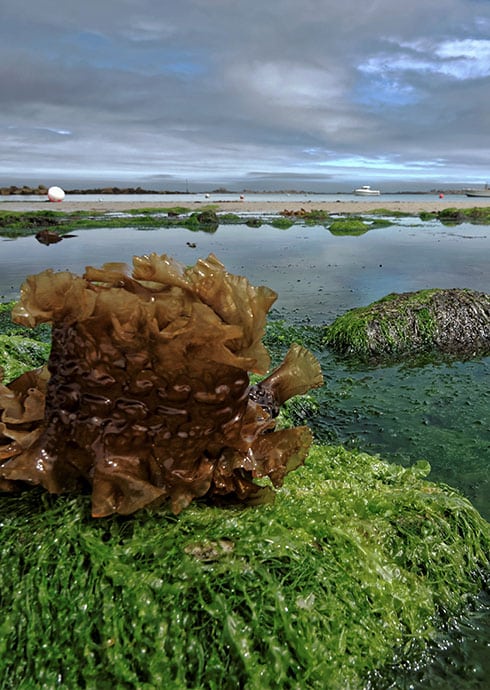
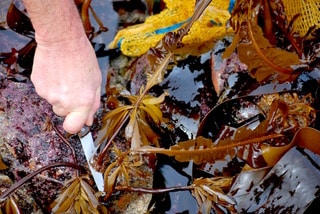
a profession
Hand-harvested seaweed
Today, the people working in this profession are descendants of seaweed growers wishing to carry on the tradition, fishing professionals and, increasingly, people wishing to set up in business and engage in short-line sales.
To become a professional seaweed harvester, you need to register with the Mutualité Sociale Agricole (MSA) or ENIM (établissement national des invalides de la marine) and apply for a license from the Comité Régional Des Pêches Maritimes Et Des Elevages Marins De Bretagne. Non-qualifying training courses are available to help you get started.
BEFORE TAKING THE PLUNGE
A few tips
- Consume only seaweed attached to a support far from a source of pollution.
- Be careful not to pull them out, but cut them with a knife or scissors (except for chondrus cripus and kelp, which must be pulled out).
- Leave the spike and a piece of each seaweed to allow it to regrow.
- Do not scrape the rock with a tool to preserve the microscopic reproductive stage of certain algae such as chondrus crispus, which looks like black patches on rocks (often mistaken for fuel oil).
- Leaving algae in place in a field to ensure their reproduction
- Do not move or turn over rocks
Harvesting periods must be respected to maintain reproduction cycles. Don't hesitate to consult the S.R.P.A.R.B website for more information before you go out.
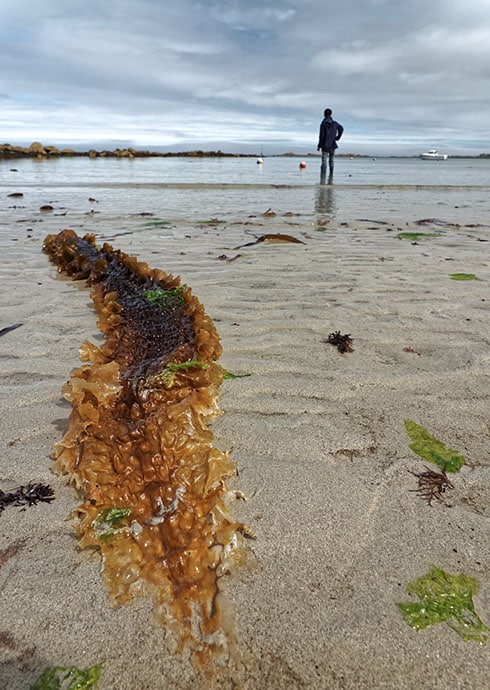
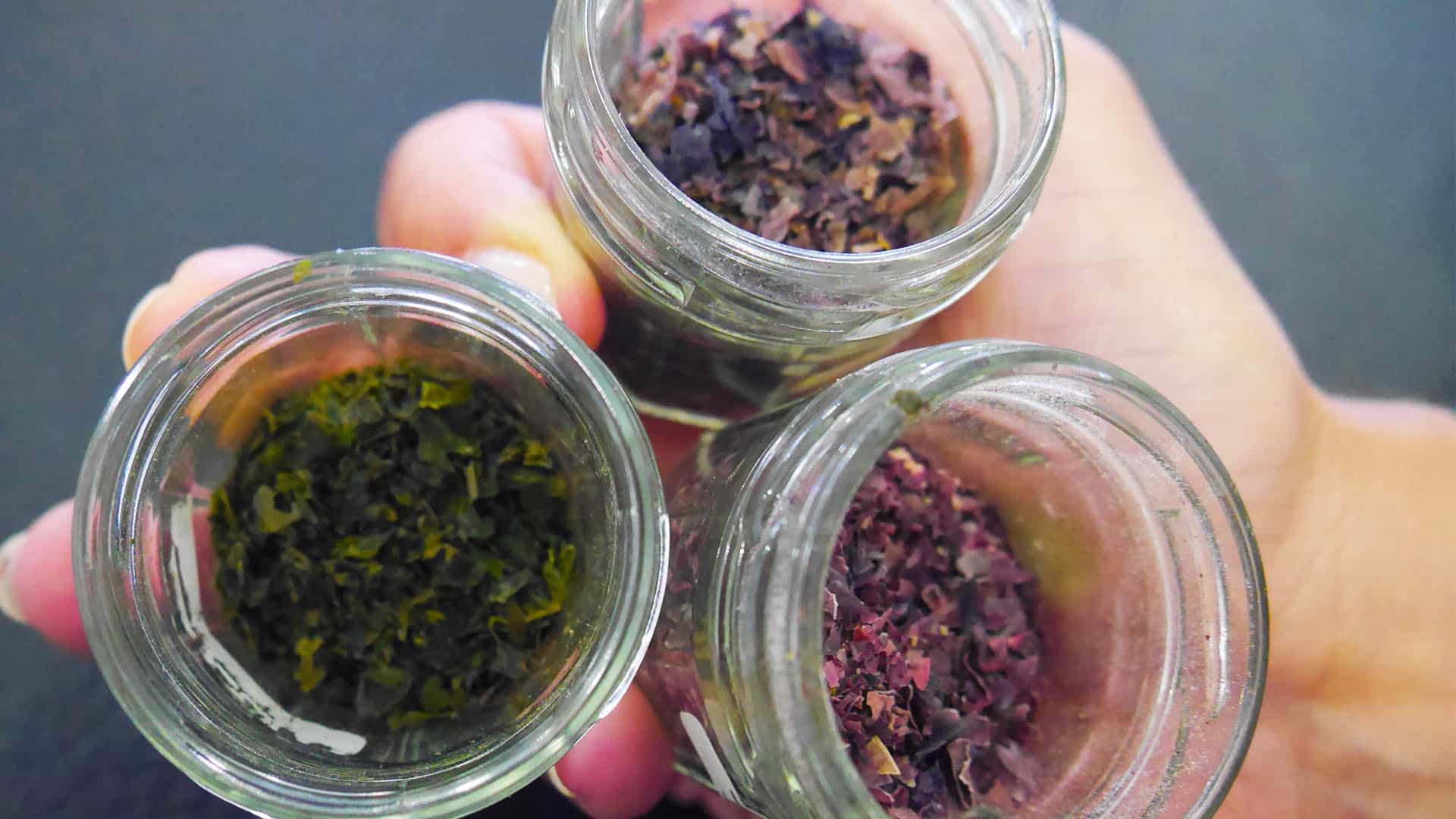
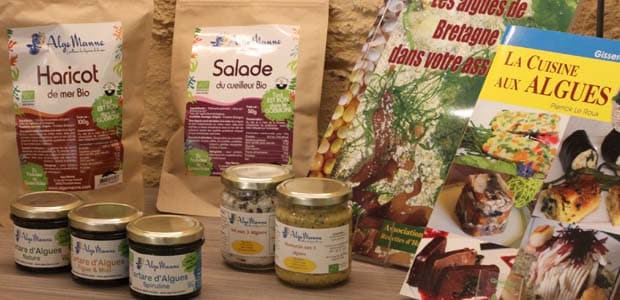
What can we do with seaweed?
The most widely harvested seaweed on Brittany's coasts isAscophyllum nodosum. It is mainly used as animal feed and soil fertilizer.
Other algae, very rich in trace elements, are used in cooking (dulse(Palmaria palmata), nori, wakame...) or in the pharmaceutical and cosmetics industries.
the history of seaweed
Seaweed has been used for decades in agriculture and local industry. The trade in this super-food, already very popular in Asia, is increasingly developing on our coasts. The same is true of marine cosmetics, which make use of its extraordinary properties. And with good reason: our coastline is the largest seaweed field in Europe!
To deepen your knowledge, here are a few sites to visit.
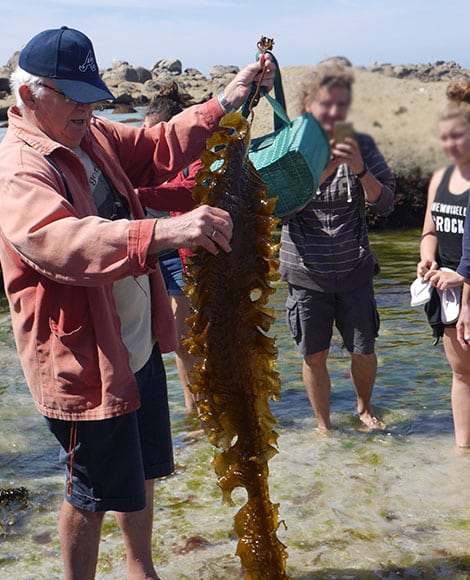
animations
Leaving with specialists
Durant toute l’année des partenaires ou des associations proposent des sorties sur l’estran afin de reconnaître les algues, les cueillir et… les cuisiner !
Les balades natures
Toute l’année des sorties nature sont proposées, sur l’estran à la découverte des algues, dans l’eau avec des randonnées « palmées » ou sur la terre ferme en forêtà la recherche des oiseaux.

- July 25, 2024
- August 08, 2024
Botanical walks to discover the flora of the sea dune
Botanical discovery of coastal flora. Book with Esther Gouault on 06 07 50 32 36 or paganglaz@gmail.com Children aged 9 and over. Duration: 2 hrs.

- 26 mai 2024
Découverte de la vie des rivières de Plouider
Venez observer la rivière de La Flèche sous toutes ses coutures, munis de bottes et d’une loupe. Lors de cette activité, vous pourrez observer de près la vie des rivières et en apprendre plus sur...
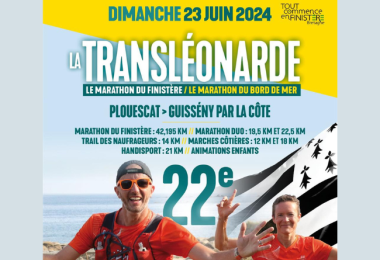
La Transléonarde
La Transléonarde c’est : - Le Marathon du Finistère : épreuve « mythique » en bord de mer entre Plouescat et Guissény. - Le Marathon Duo, 19.5 km et 22.5 km, tremplin idéal vers le...
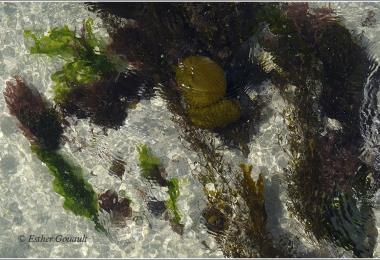
- October 20, 2024
Discover seaweed on the foreshore and taste it
Outings to discover seaweed on the Meneham foreshore, followed by a tasting, during high tides. Registration essential (places limited) with Esther Gouault on 06 07 50 32 36 or paganglaz@gmail.com Duration 2h
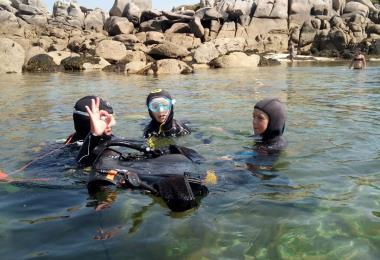
- 15 juin 2024
Baptism diving - Plounéour-Brignogan-Plages
It's a chance to discover the equipment, the fauna and the flora, in small groups starting from the beach! It's also a stress-free way to share an unforgettable moment, at your own pace...
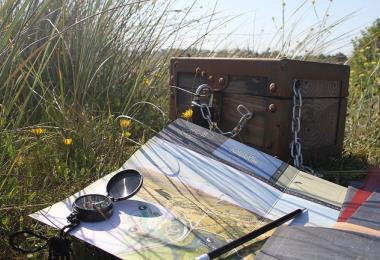
In search of Roc'h Gozh, the landscape stone
A new adventure game in Brittany. Will you dare to set off in search of Roc'h Gozh, the landscape stone? 9 riddles to solve to open 9 secret chests that will lead you to Roc'h Gozh's lair...

- 01 juin 2024
Scuba diving - Meneham
It's a chance to discover the equipment, the fauna and the flora, in small groups starting from the beach! It's also a stress-free way to share an unforgettable moment, at your own pace...
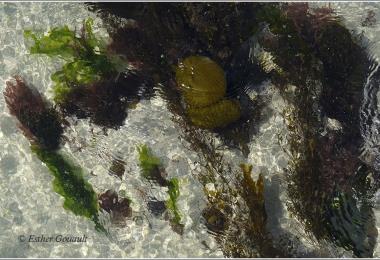
- August 21, 2024
- 21 septembre 2024
Discover seaweed on the foreshore and cookery workshop
Outings on the Meneham or Crémiou foreshore to discover seaweed during spring tides. Each outing is followed by a seaweed tartar-making workshop. Bookings with Esther Gouault on 06...
